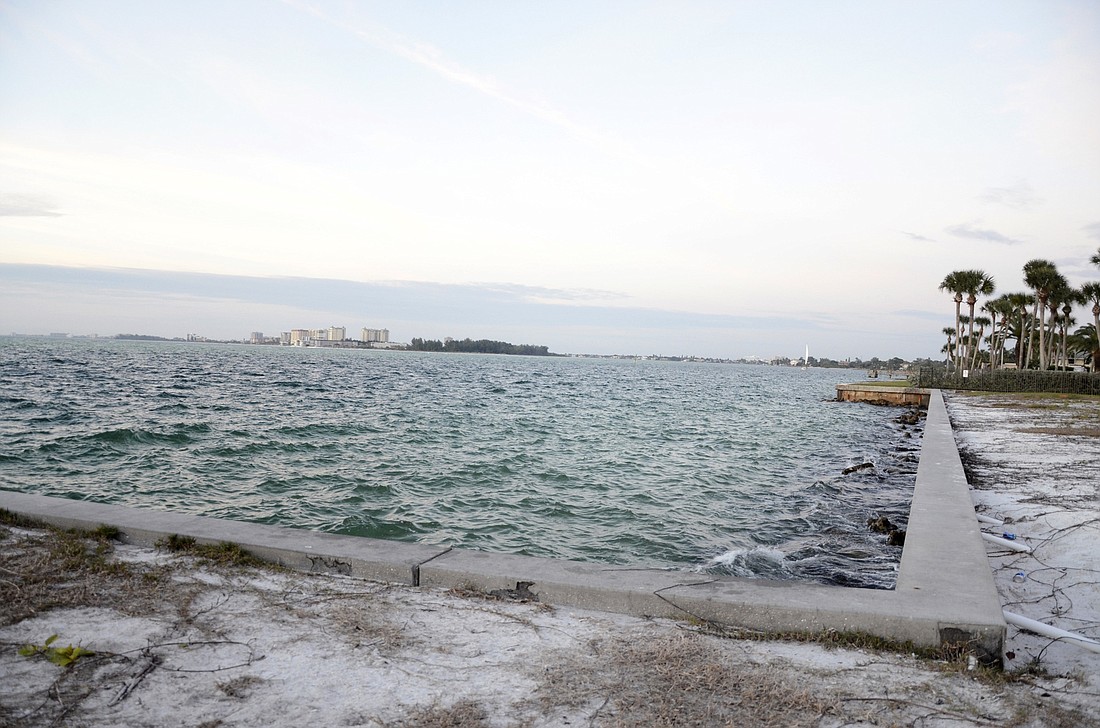- December 5, 2025
-
-
Loading

Loading

After the U.S. Army Corps of Engineers released its redesign of the dredge project to mine Big Pass for sand for Lido Key March 30, Siesta Key stakeholders wasted no time in examining the lengthy report.
Catherine Luckner, a Siesta resident who has been the Siesta Key Association’s watchdog for environmental issues, found multiple areas of concern.
“It’s up to us to look for things that could affect us,” she said at SKA’s April 2 meeting.
One of her main concerns was a shift in the sand source location. Previously, the Army Corps had planned to dredge sand from an ebb shoal. However, the corps chose to remove sand from a channel it would dig into Big Pass.
Another major change is the removal of the third groin in the design, which was originally going to be located just offshore of Ted Sperling Park on South Lido Key. The remaining two groins on Lido will be reduced in size.
Luckner said she’d like to meet with Lido Key residents and make sure they understand the potential impacts groins could cause. She is concerned these structures could block the beach off in some areas, and the parts that stick out into the water might cause dangerous currents for swimmers.
Save Our Siesta Sands 2, a community organization aimed at protecting Siesta Key and its beaches, has retained coastal geologist Dr. Robert Young to examine the Army Corps’ models in the redesign as an additional check on potential effects on Siesta Key. “We want to have another set of eyes,” said Jeanne Ezcurra, the treasurer and director on the board of directors for SOSS2. “We’re not sure the third-party review will be a fair appraisal.”
SOSS2 also has the legal backing of the Florida Wildlife Federation, a state affiliate of a national organization aimed at wildlife protection and conservation, which has agreed to give the nonprofit legal counsel should the need arise. Members of both organizations believe the dredge needs more research, Ezcurra said.
“We disagree with their environmental assessment,” she said.
SOSS2 is raising money to pursue legal action if necessary.
County’s involvement
Sarasota County chose Atkins, a global design, engineering and project management consultant, to perform an independent third-party peer review of the Army Corps’ design.
Atkins is listed in the pre-approved coastal engineering services library, which includes seven engineering companies that county staff has vetted and approved for certain projects. SOSS2 has expressed concern with the pre-selected list, saying the firms on this list cannot be unbiased because all have worked with the Army Corps previously. However, Laird Wreford, coastal resources manager for the county, said that a firm’s previous work with the Corps doesn’t automatically disqualify it or mean there is a conflict of interest.
The scope of work will include the input collected from the community, which Wreford gathered in the fall, that identified the three top community stakeholder concerns: user experience in Ted Sperling Park at South Lido Key, possible impact to Siesta Key and its beaches and possible impact to boat navigation in Big Sarasota Pass.
Wreford said county staff had conservatively estimated the contract will cost between $15,000 and $50,000.
“We want an unbiased but professional, expert look, on the potential impacts of the Lido project,” Wreford said. “Like getting a second opinion from another doctor — it gives you that better sense of what jives with what the first doctor recommended.”
Moving forward, the county will have a smaller stake in the project now that the third groin, which was on county land, has been eliminated. There will be some sand placed on county land on Lido Key, and the city and the Army Corps would have to gain permission from the county to use its property for any equipment storage or placement.
“In terms of stewardship of coastal systems, the county still wants to make sure that it’s carefully looked at — the impact to other areas — and get concerns answered,” he said. “We’re keeping a careful eye.”